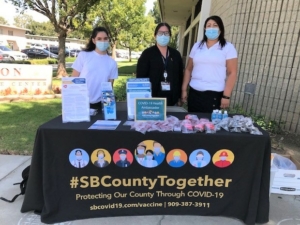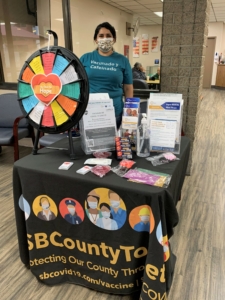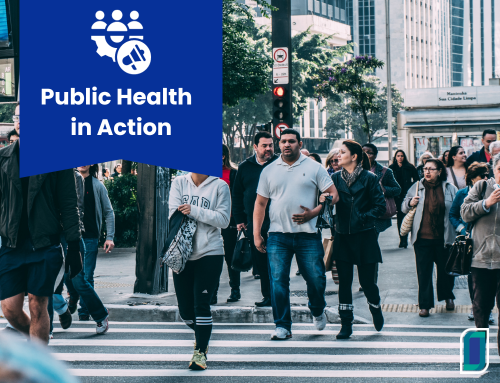Counties across the country faced unprecedented challenges in ensuring community health and well-being during the COVID-19 pandemic. Many notable examples of public health departments responding to their communities’ needs emerged during this time.
One such example is the County Health Ambassadors Program in San Bernardino County. This initiative from the San Bernardino County Department of Public Health (SBDPH) put community at the forefront and was recognized for its impact with a 2022 NACo (National Association of Counties) Achievement Award.

A Purpose-Driven Initiative
The County Health Ambassadors Program was developed with a clear purpose – to bridge the gap in community-based services that were not easily accessible to all residents. The program, launched at the height of the pandemic in July 2021, engaged ambassadors to provide COVID-19-related outreach and education in the community to address health literacy, health equity, information gaps, and vaccine hesitancy concerns.
SBDPH prioritized collaboration and focused on dismantling silos. Collaboration with community organizations, faith-based groups, and other entities was essential to positively impacting priority communities. In addition to a user-friendly website for partners to access and disseminate resources and unified messaging, the program engaged over 20 community-based organizations to ensure culturally appropriate and accessible communication.
Data also played a leading role in driving program operations, determining where to allocate resources strategically and prioritizing outreach efforts.
Building the Program and Ensuring Impact
Creating the County Health Ambassadors Program involved many steps to ensure its success:
- Determine funding
- Develop a mission and vision with equity in mind

- Create an organizational chart, define roles and responsibilities, and establish an onboarding and training process
- Develop success metrics and a process for tracking
- Create a communications and marketing plan
Building and training the right team was also crucial, ensuring they had the lived experience to connect and were equipped with the most accurate, effective resources for community outreach. Teams of two were formed with 90% of the teams being bilingual to deliberately address language differences within communities.
SBDPH also implemented a comprehensive training program to ensure teams were equipped to make the most impact. This included a “train the trainer” model, population-specific training, COVID-19 education, and additional training in public health, data utilization, customer service, and culturally appropriate communication.
Although the program began with an initial focus on the pandemic, the department found it necessary to focus on broader public health concerns in the community, not just COVID-related challenges. This resulted in non-COVID-specific information being included in outreach.
To measure success and show impact to funders and other stakeholders, SBDPH tracked presentations, community interactions, distributed handouts and brochures, and participation in community-based events. SBDPH embraced processes from PHAB accreditation to reassess and refine the program, continuously improve, and ensure essential skill sets within the workforce.
The County Health Ambassadors Program demonstrates the power of centering community, equity, and making data-driven decisions during a public health crisis. SBDPH’s innovative response to their community’s needs during this time laid the foundation for more sustainable, equitable, and effective public health programming in the future.

